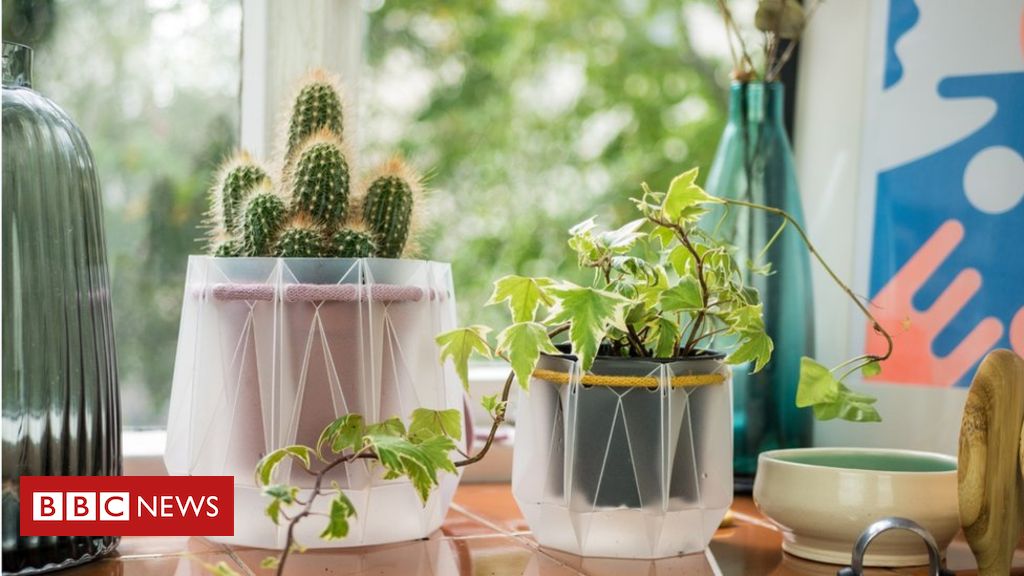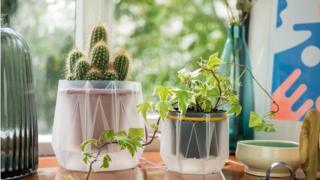Image copyright
POTR Pots
The pots are claimed to have a much-reduced impact on the environment
Two Scottish design engineers are preparing to a launch a flat pack self-watering plant pot.
Andrew Flynn and Martin Keane believe their design will have a carbon footprint significantly lower than traditional flower pots delivered as gifts.
All the materials used are 100% recycled and the flat-pack design should reduce the need for individual trips by delivery drivers.
The designers claim their product – which can be delivered by post – is 100 times more carbon efficient than traditional plant pots.
The POTR pots are a side project for the two designers, who are employed by Dyson.
“As product designers, I don’t think there’s ever a moment we’re not actually designing something, whether it’s the day job or not,” says Andrew, who was born in Glasgow and met Martin when they were studying product design engineering at the Glasgow School of Art and the University of Glasgow.
“We’re always thinking about the next idea in the pipeline.
“So this is one of many side projects which I had on the go for a little while. This one just seemed to take off.”
The pots are primarily made of recycled polypropylene which would otherwise end up in landfill.
Image copyright
POTR Pots
Andrew and Martin developed the design as a side project but their professional work is in the development of electrical products
Andrew and Martin, who is from Greenock, say they put a lot of thought into ensuring the pots were easy to assemble.
According to Andrew: “When a customer receives the product they take it out the envelope and it’s lying flat and it’s basically net-shaped.
“What we’ve integrated is a quick draw cotton cord – basically a draw string. The customer pulls both sides of that draw string.
“The pot then pulls up around your plant.”
Once assembled, one end of the cord goes into a reservoir, drawing water to the other end, which goes in the soil.
Crowdfunding
For designers working in their own time, coming up with a product which works has traditionally just been the start of a long road to production.
The challenge of raising finance to cover the cost of even a small initial production has put off all but the most determined.
The innovation of crowdfunding – with a large number of people each backing a project with a small sum – has, Andrew says, changed the landscape for new designs.
“In the last 10 years there’s been several crowdfunding websites which have been launched.
“If you’ve got a great idea you can take it all the way through to detailed resolution but you haven’t gone to manufacture yet.”
He says that, in the case of their pot design, this has been a crucial factor. For their initial batch of pots they need to raise just £500.
“That is really beneficial for us.
“It means we can raise the capital investment that’s required to do our minimum production run and pay for any manufacturing tooling costs which we require to make our product.”

















